Internet service providers (ISPs) vary in terms of offers on speed, technology, and price. The more competing offers these ISPs provide, the more beneficial it is for everyday clients.
There are so many factors that you may want to consider for comparison, but speed always works as a huge deciding factor for consumers. What makes these ISPs a cut above the rest? Check out our list of some of the best ISPs in the US.
Note: Before considering any of these services, please check if they're available in your area. Many of these providers have regional limitations.
1. Verizon Fios
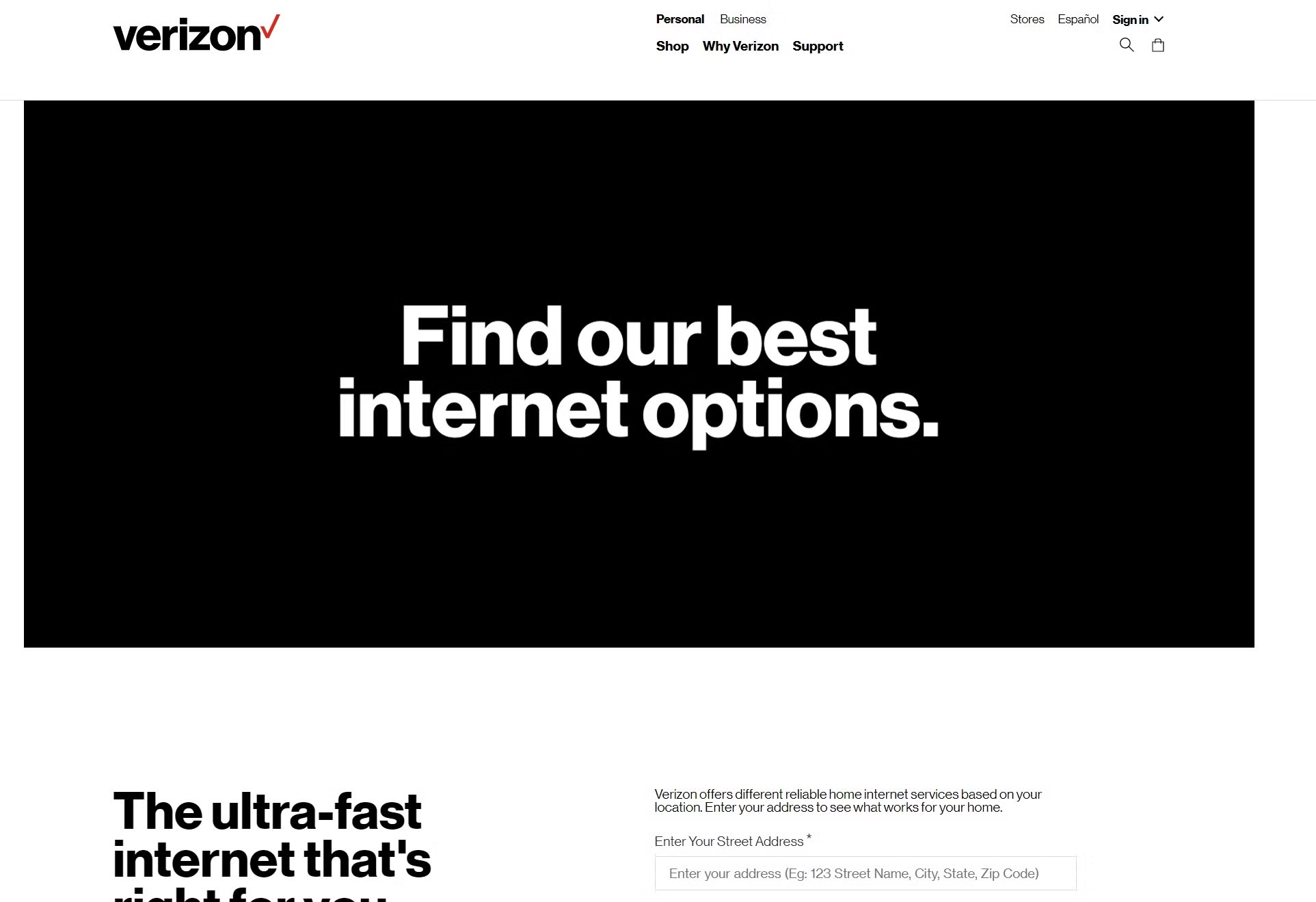
Verizon Fios (Fiber Optic Service) was introduced in 2005 and was among one of the first providers to offer fiber optic internet to homes. It is accessible to 35 million customers in 10 US states, mostly on the East Coast.
In addition to this, Verizon also provides DSL service to residential customers. Its monthly plan usually starts at $39.99 for 200Mbps downloads. Its other monthly plans cost up to $79.99 for downloads up to 904Mbps.
Each plan locks service for a minimum of one year. All fiber optic packages come with TechSure 24/7 support. Access to McAfee security programs also comes for free. LifeLock identity theft protection and LastPass password manager are also available freebies.
2. AT&T Internet
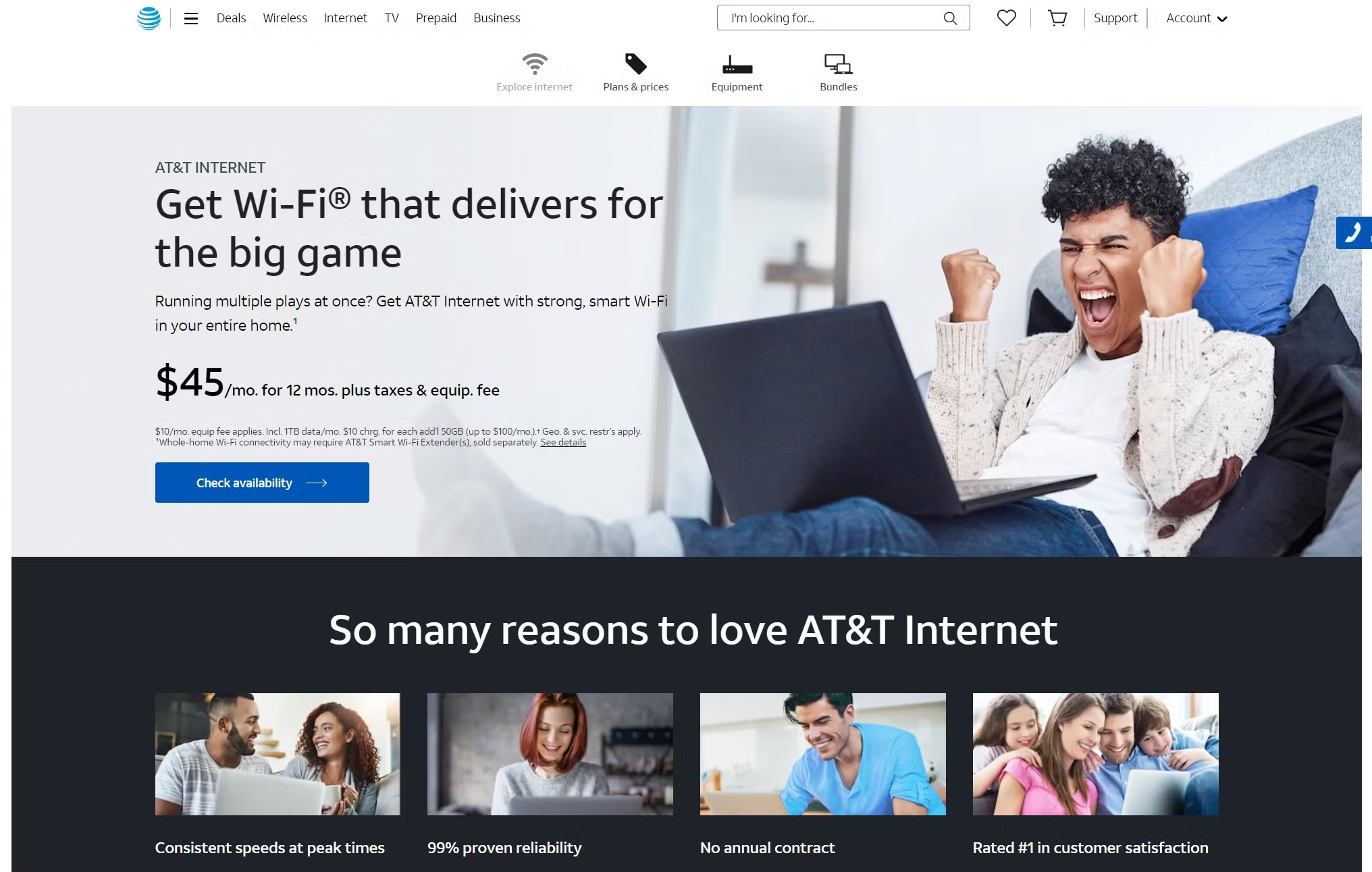
The high-speed service of AT&T Internet covers up to 21 states in the US. It offers DSL broadband, fiber, and also fixed wireless internet service. Its monthly plans start from $39.99 when bundled with other products.
Download speeds reach up to 940Mbps. Customers can save money by bundling their internet with different offers, such as DirecTV and U-Verse. AT&T also does not charge activation or equipment fees, and that’s a big plus.
Customers can also have access to McAfee without additional cost. Additional benefits include 11 email accounts and access to more than 30,000 hotspots around the country.
3. Xfinity
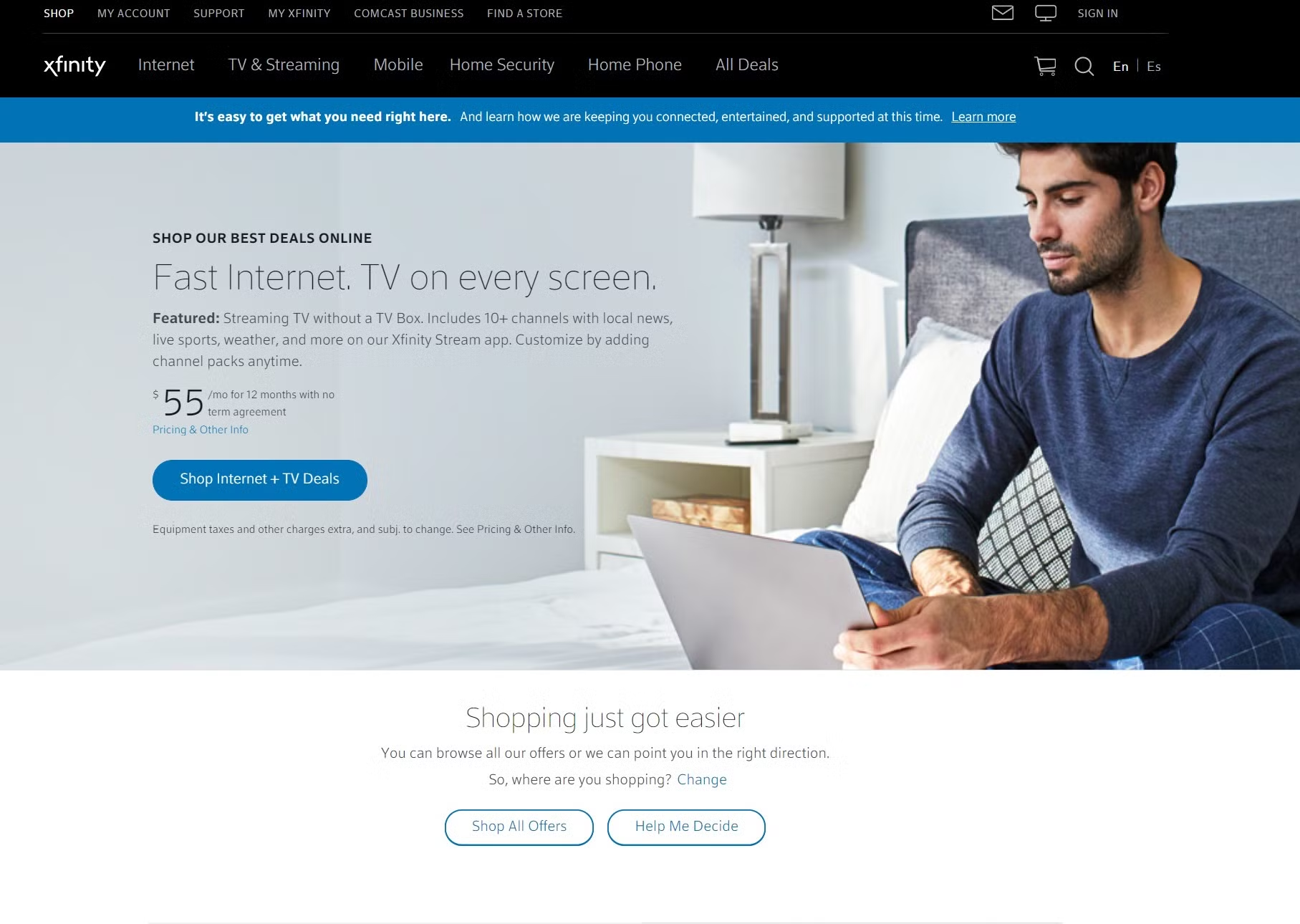
Xfinity is the ISP offered by Comcast. The brand is known for consumer cable TV, telephone, internet, and wireless.
Comcast has been regarded as one of the biggest cable providers in the US, as it services commercial and residential clients in 40 states. Xfinity is accessible to 58 million homes as well as businesses. Download speeds range from 24Mbps up to 2,000Mbps.
Along with its internet service, Xfinity also offers security programs. It has instant antivirus protection included in all of its internet plans. Xfinity also offers parental controls that can be very helpful for anyone with young children.
Parents can also create rules and time restrictions with this feature. Xfinity also offers more than 19 million hotspots across the country to help customers connect their mobile devices even when leaving their homes or business establishments.
4. CenturyLink
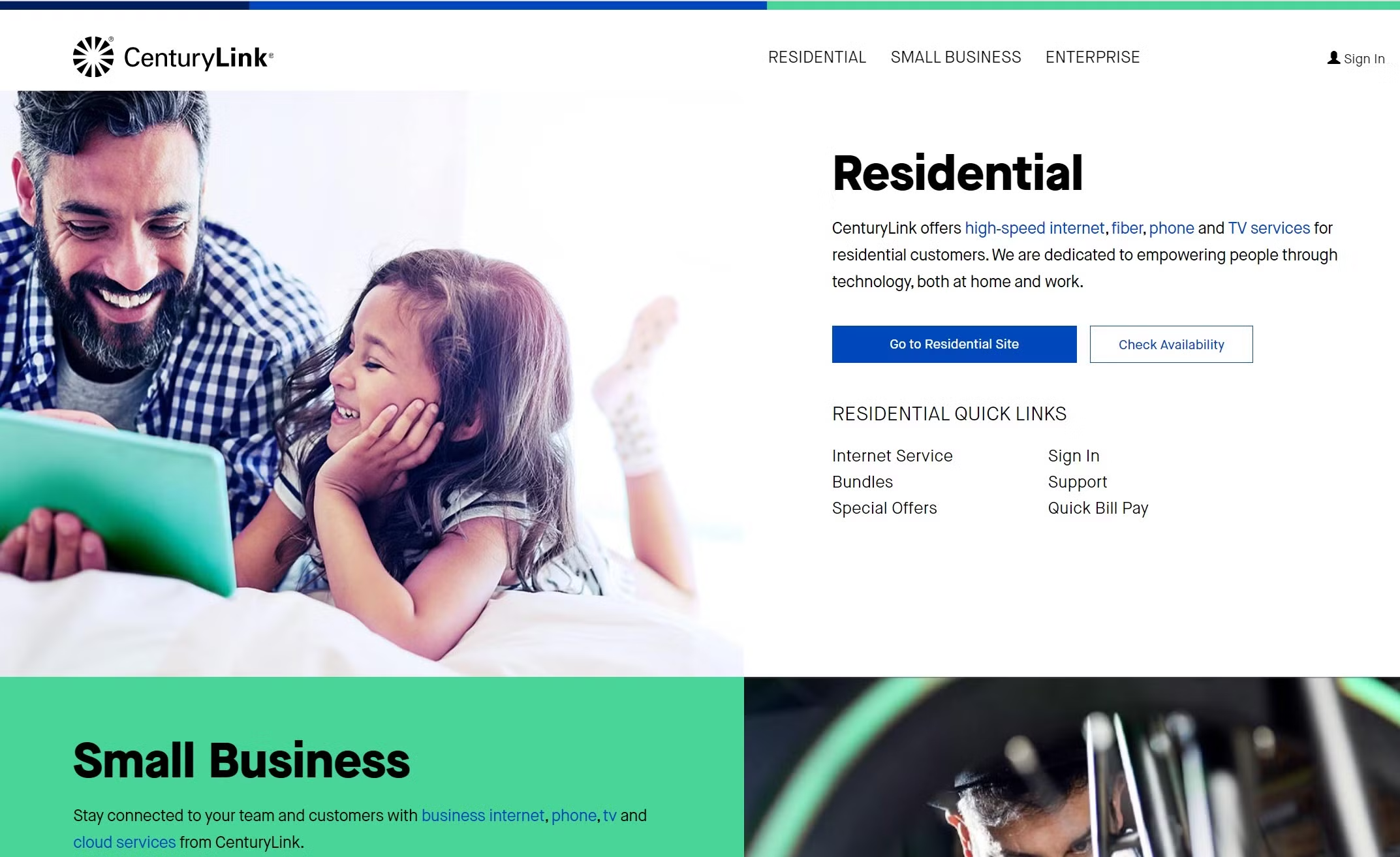
CenturyLink brings internet service to customers in all 50 US states. Its DSL is accessible to 50 million consumers. When it comes to its fiber-optic internet, it offers it to around 10 million people.
Its price-for-life offer is one of the most appealing factors. CenturyLink offers a $49 monthly plan with 200Mbps downloads as well as a $79.99 monthly plan for 904Mbps downloads.
5. Frontier
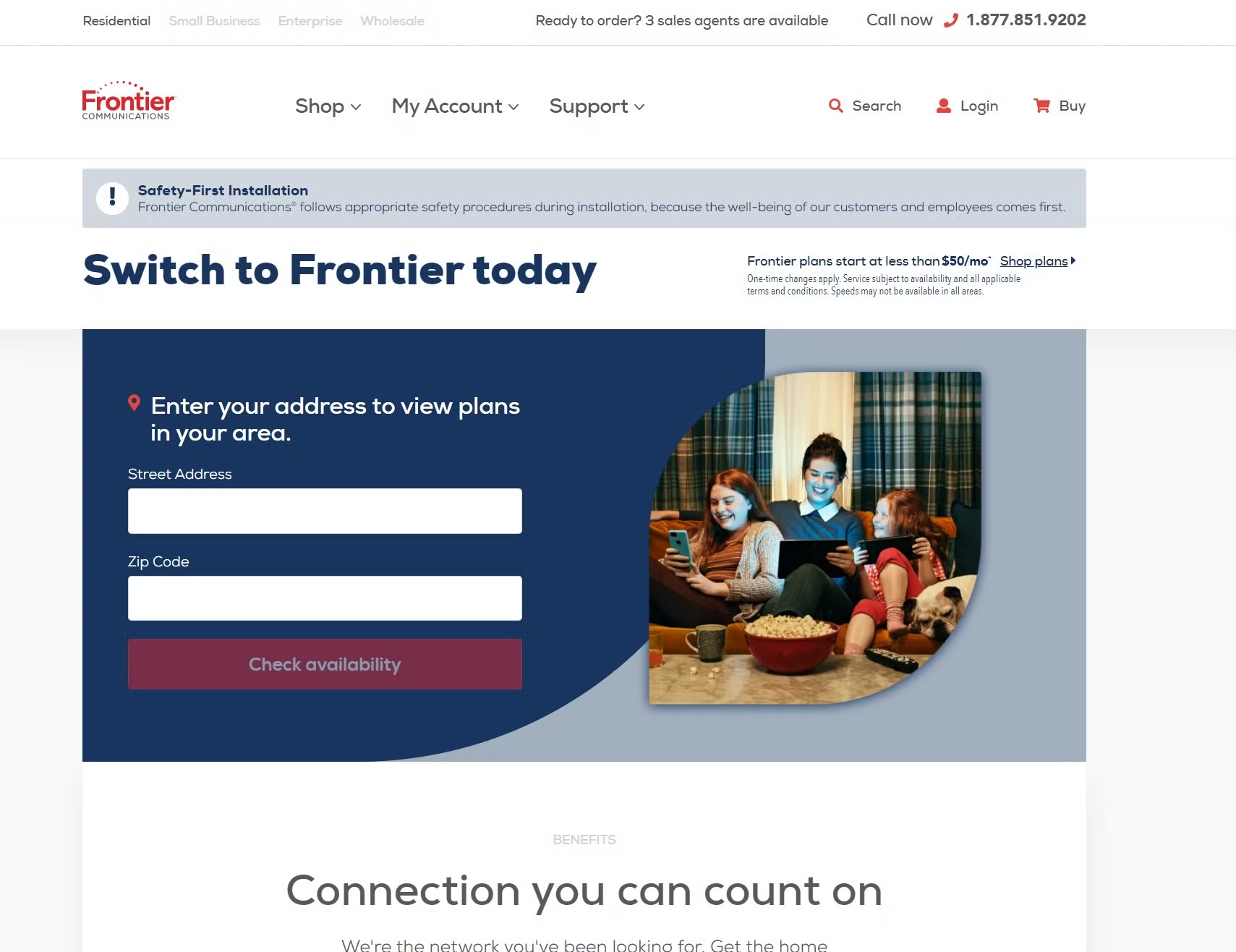
Frontier caters to 29 states in the US. It's mainly offered in the West Coast, South, and Midwest. It offers no data caps and has more affordable plans compared to other ISPs.
Its monthly plans start at $20 for 6Mbps. It also offers a $74.99 monthly plan for 940Mbps.
6. Spectrum
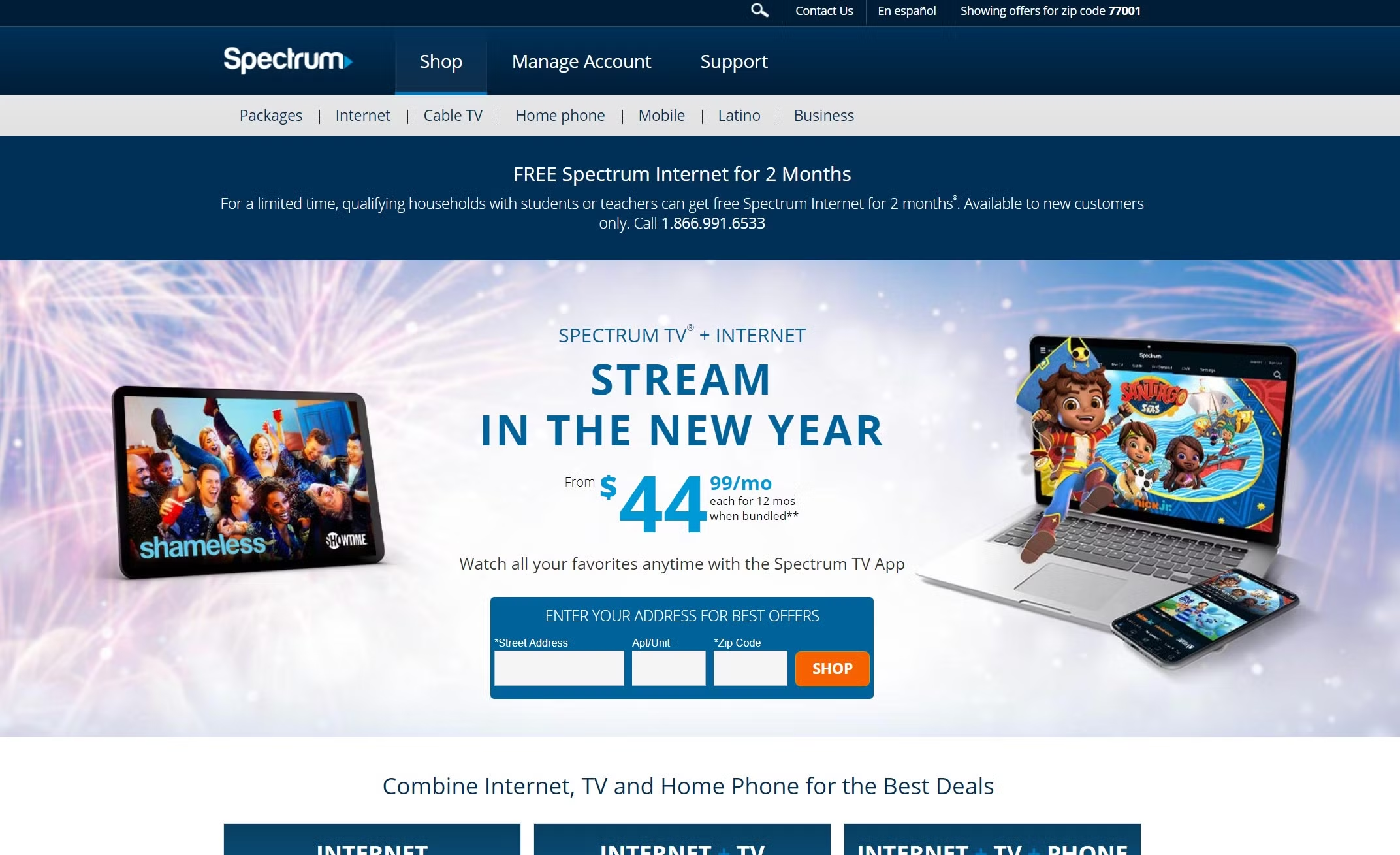
Charter Communications offers Spectrum in 41 states in the US and serves more than 29 million clients.
Spectrum was launched in 2014 and offers both fiber and broadband services to businesses and residential clients. Monthly plans start at $49.99 without any data cap and offer up to 940Mbps download speed.
7. Cox
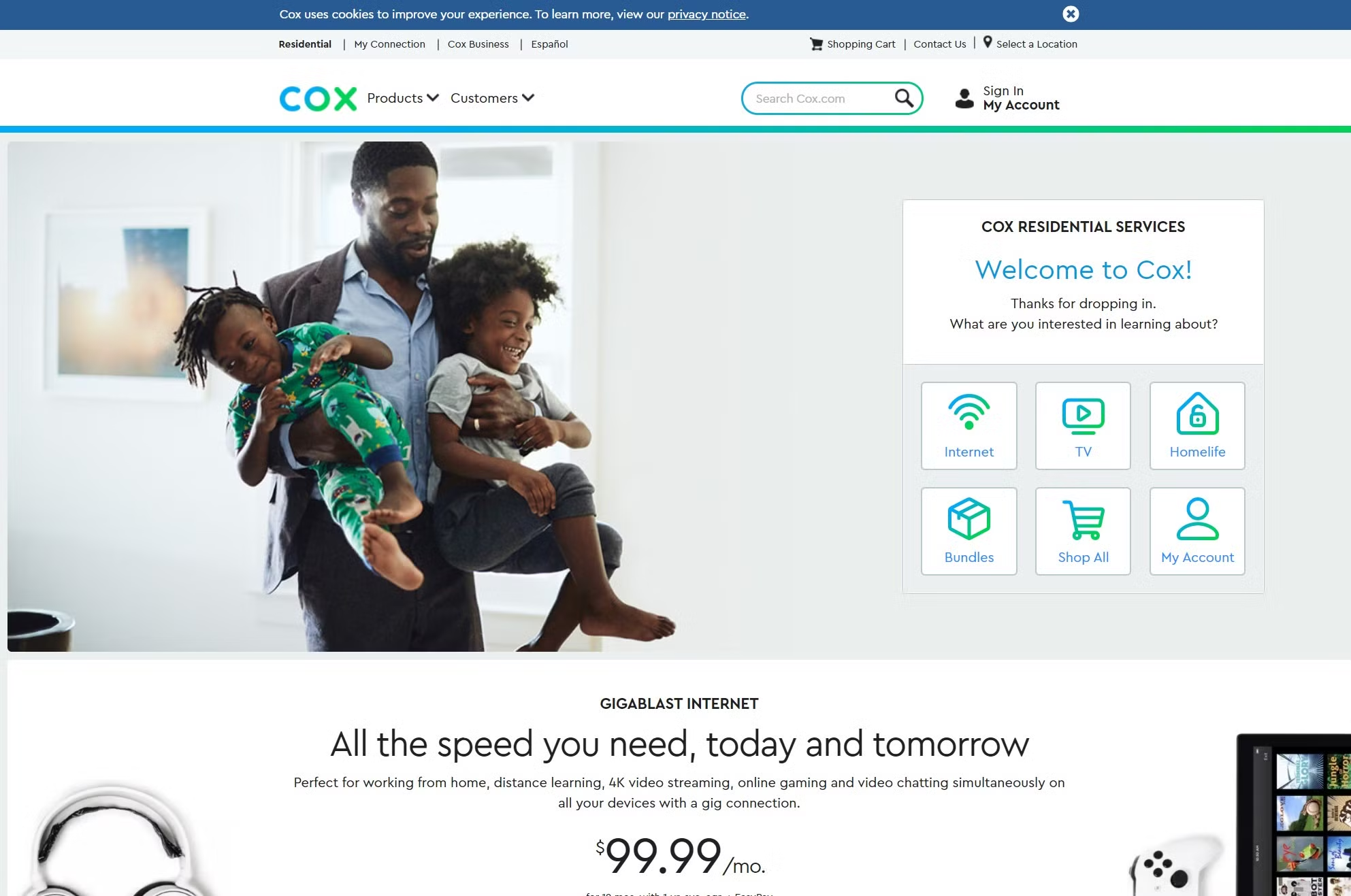
Being the third-largest cable TV provider in all of the US, Cox serves 18 states in the US. The two main states that it has clients in are California and Arizona.
It offers internet, phone services, and cable television. Its monthly internet plans start at $29.99 for 10Mbps, but it also has a $99.99 monthly plan for 940 Mbps.
8. Sparklight
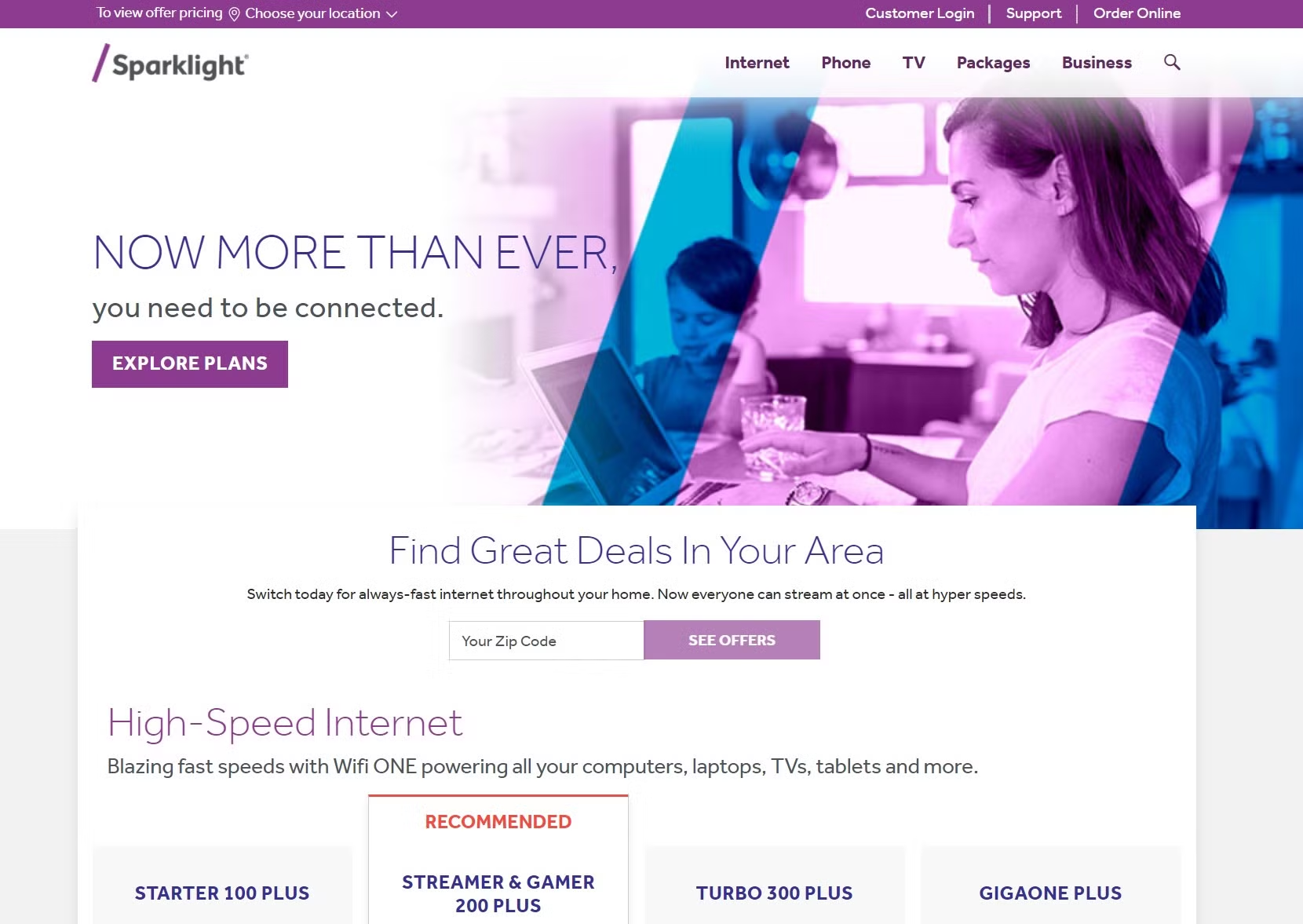
Formerly named Cable One, Sparklight services 19 states in the US. Its primary areas of service are in the Northwest and Midwest regions. Sparklight offers cable TV, phone, and internet services.
Its services are available to three million people. Its monthly plans start at $39 for 100Mbps. It also has a $125 monthly plan for 1000Mbps and comes with a data cap of 1500GB.
9. Mediacom
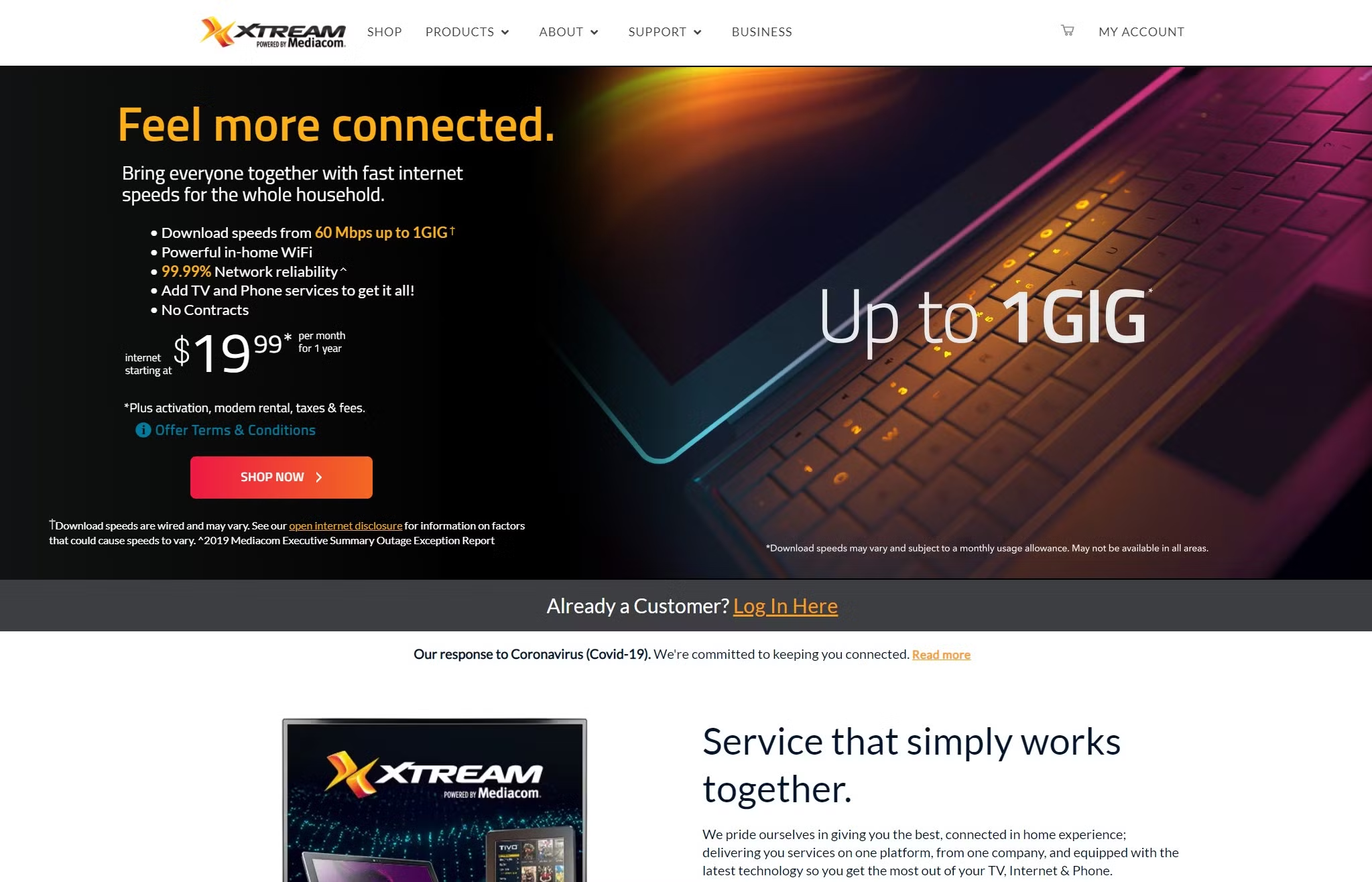
Mediacom was initially offered way back in 1995, providing advanced phone, TV, and internet services to the smaller towns and cities in the United States. Today, it offers services in 22 states in the US.
Considered the fifth-largest cable provider in the country, Mediacom is said to have the most extensive internet service in the Midwest.
Its monthly plan starts at $39.99 for 60Mbps. It also has a $79.99 monthly plan for 1000Mbps that comes with a data cap of 6000GB.
10. Suddenlink
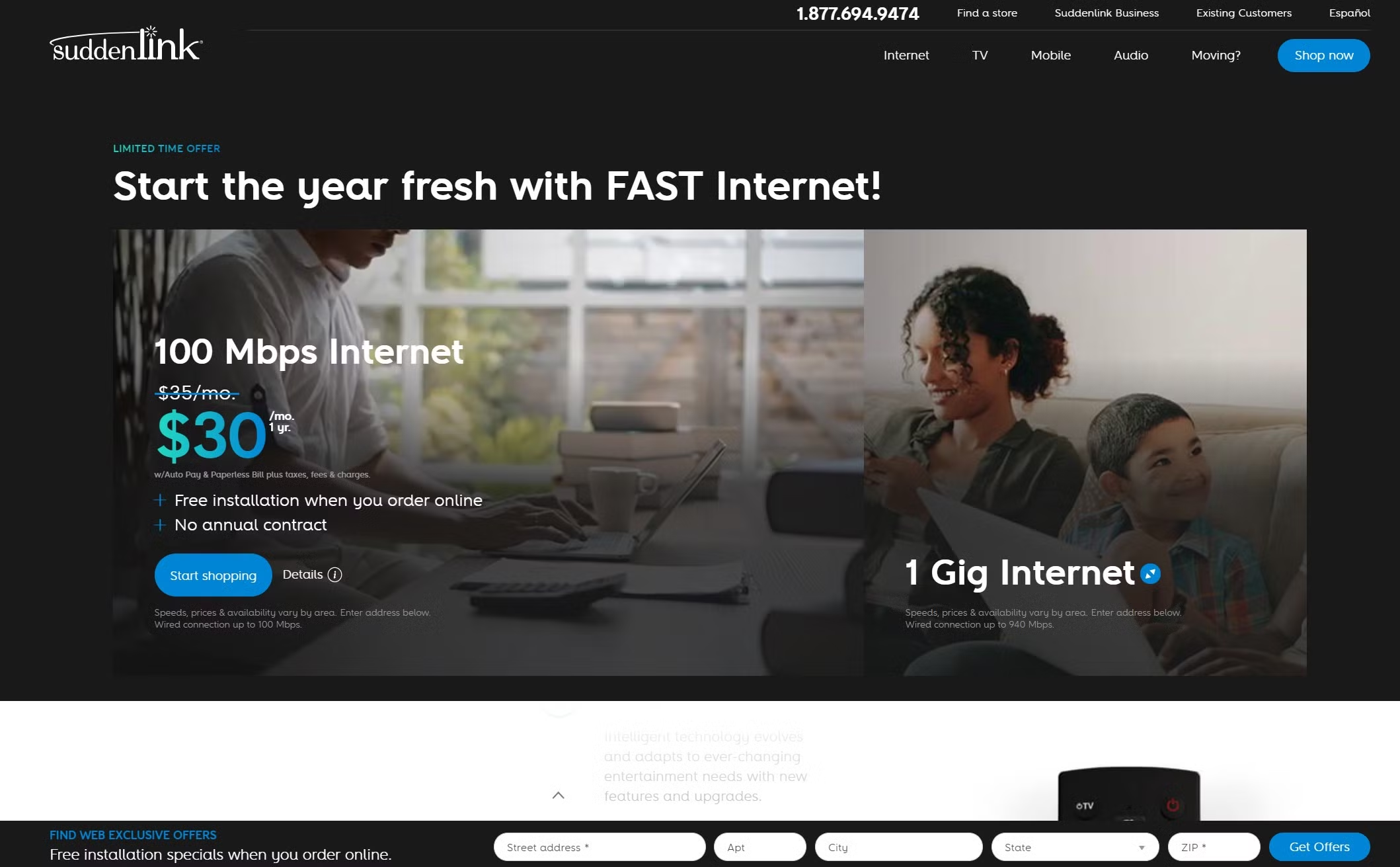
Suddenlink offers internet, phone, and cable TV services in 19 states in the US. Its primary areas of service are in the Southwest and the South. It offers cable broadband and fiber internet.
Suddenlink uses promotional pricing. It has a $35 rate for 50Mbps. It also offers a monthly plan of $80 for 940Mbps.
11. WOW
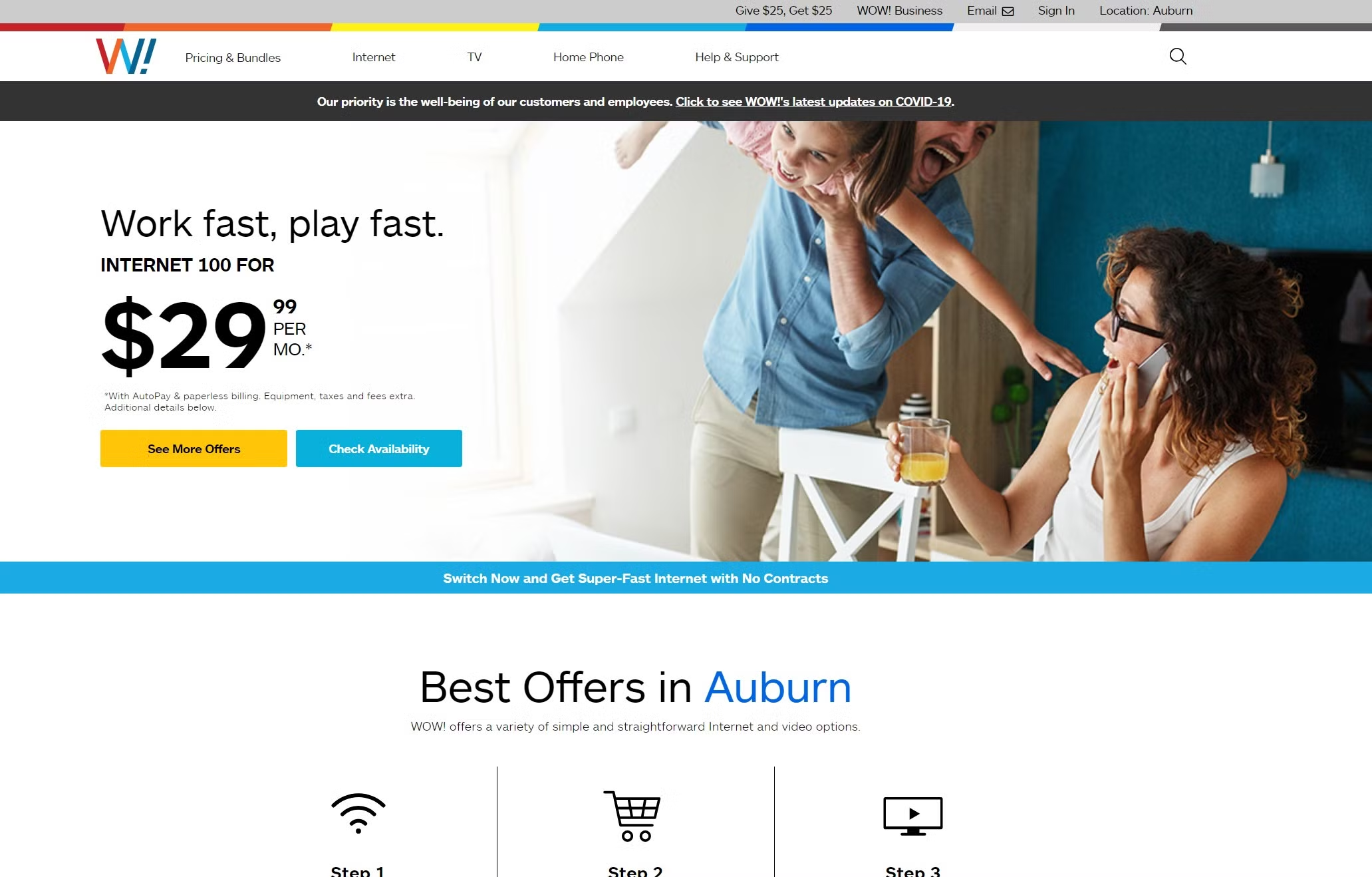
WOW offers fiber, cable, and DSL internet service in 10 states across the Southeast and Central regions of the US. It has no contract or data caps.
WOW has a 100Mbps monthly plan starting at $39.99. It also has a $74.99 plan for 1000Mbps.
12. Windstream
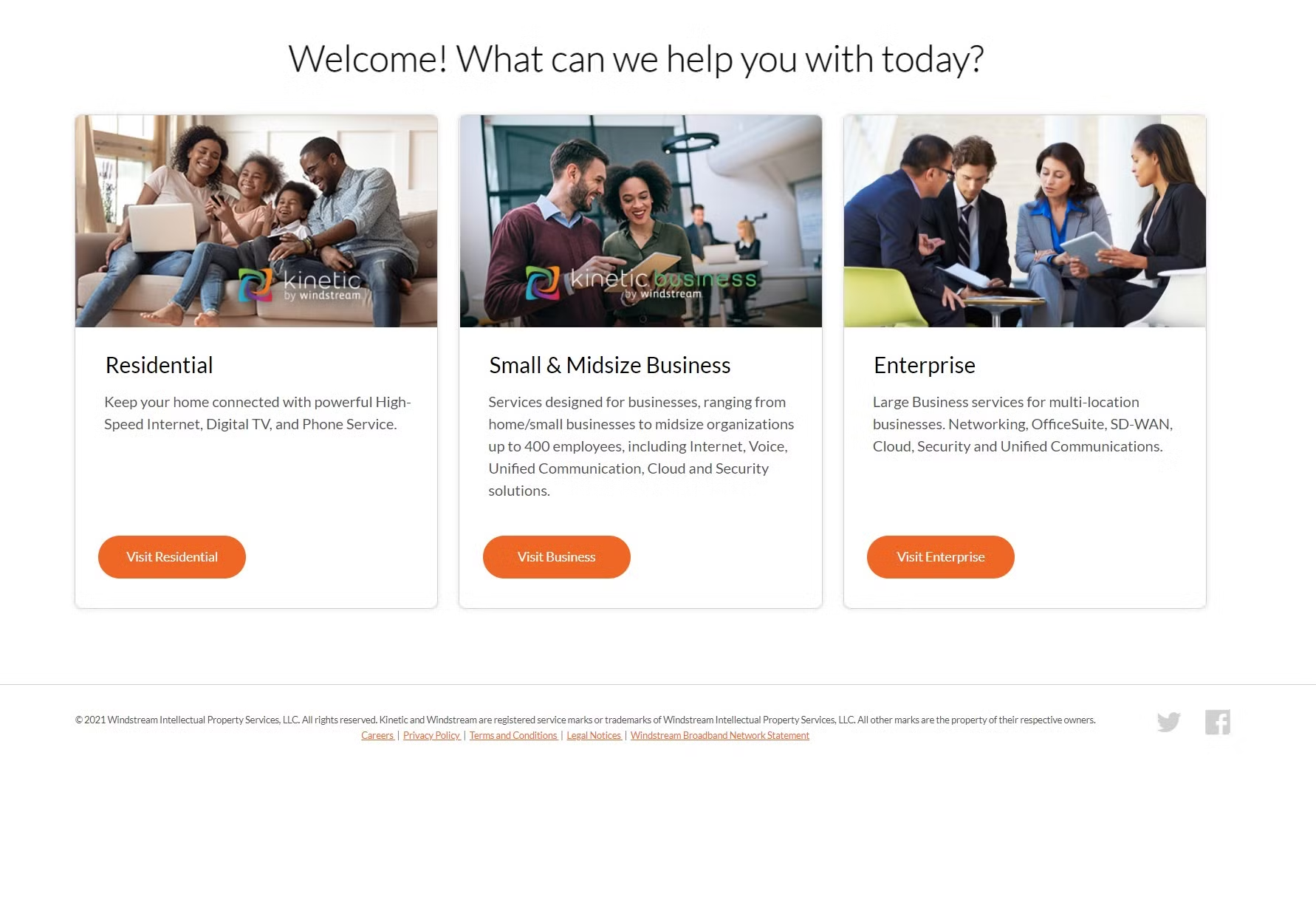
Windstream provides DSL internet service to all 50 states and Kinetic hybrid fiber DSL to 18 states. It doesn't have any data caps and doesn’t require contracts as well.
However, its prices go up after the first year. Windstream’s Kinetic monthly plans start at $55 for 100Mbps. It also has a $74.99 rate for 1000Mbps per month.
Getting the Best ISP Depends on Your Needs
ISPs battle to offer the widest coverage, the fastest downloads, and the most affordable deals. Any customer can decide based on these aspects—just make sure that the service is available in your area.
You should also decide on your monthly budget. Check out how much data you need per month. If it would save you money to bundle offers, then choose to do so.